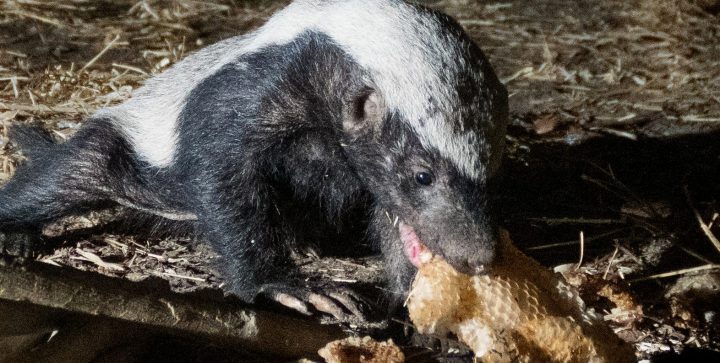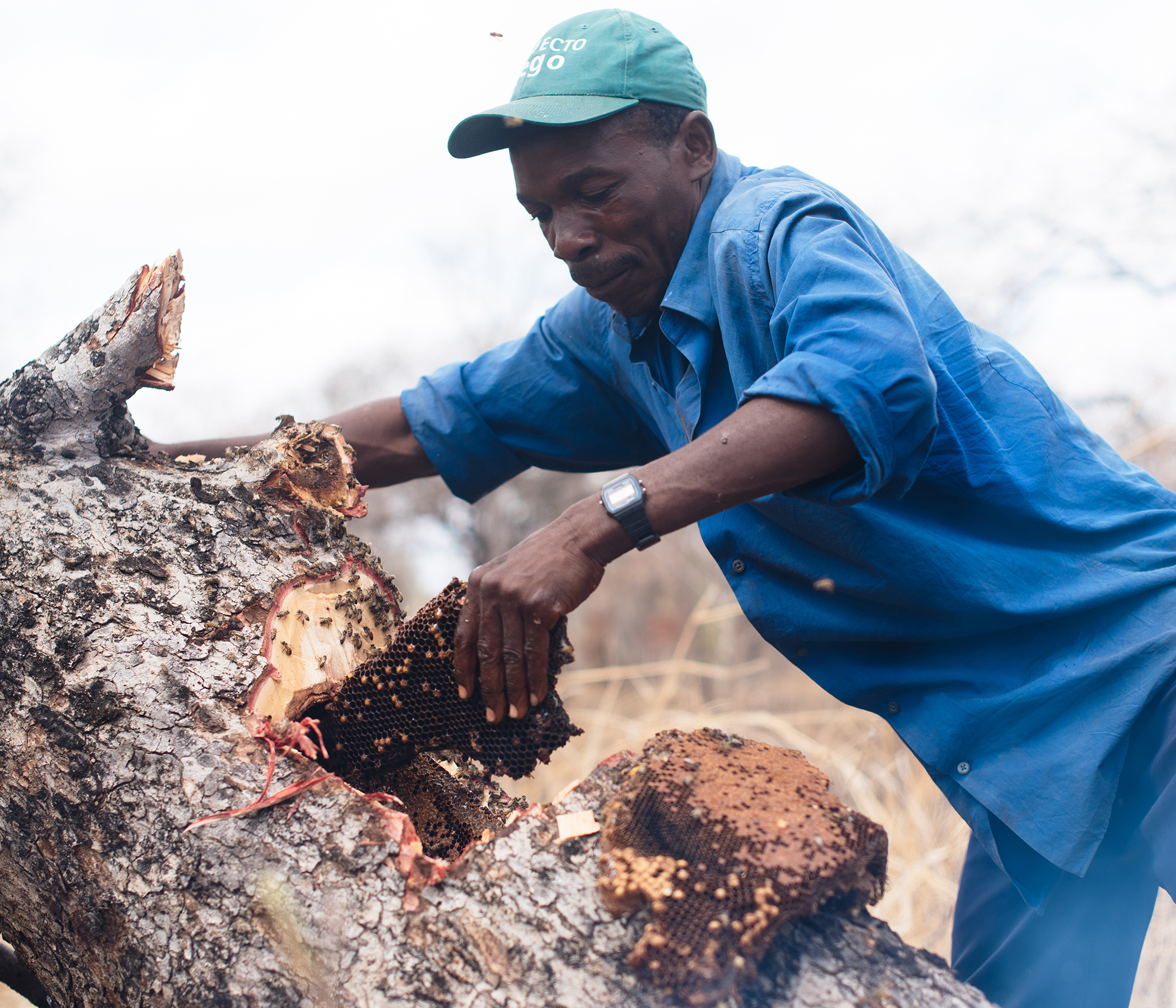INTERSPECIES COOPERATION
Intriguing symbiosis between greater honeyguides and honey badgers – the mythology and the facts

Researchers have interviewed indigenous hunter-gatherers from nine African countries to try to establish whether honeyguides really do lead honey badgers to bee hives.
For centuries, it has been a myth that has captivated naturalists and has even made the odd appearance in films.
That myth involves the greater honeyguide (Indicator indicator) – the bird famously known for leading humans to honey – helping honey badgers find bee hives.
But it is a myth that might actually be true, thanks to a new study that involved interviewing 400 honey hunters from across Africa.
The problem with stories about honey badgers and honeyguides cooperating, explains Dr Jessica van der Wal of the University of Cape Town, the lead author of the study, is that many of these are old second-hand accounts.

A honey hunter harvests a bees’ nest in the Niassa Special Reserve, Mozambique. (Photo: Dominic Cram)
Shaky anecdotes even crept into the 1974 wildlife documentary film Animals Are Beautiful People (also called Beautiful People) by the well-known South African director Jamie Uys, who included a scene where a suspected tame honey badger followed a taxidermied honeyguide attached to a fishing line to a bee hive. The movie went on to win the Golden Globe Award for Best Documentary Film in 1974.
“Do honeyguides and honey badgers cooperate? My default answer always was that it is quite unlikely because honey badgers can’t see very well, can’t hear very well but they can smell very well. So they probably don’t need the honeyguide to find those bee hives,” explains Van der Wal.
“So that’s what kind of motivated us to look into this a bit more carefully and speak to the experts, which are the honey hunters themselves.”
The honey hunters are from nine countries across Africa and many use honeyguides to help them find bee hives. After breaking into the hive, they leave an offering of beeswax for the bird.
Researchers in these countries asked the hunters if they had seen honeyguides interacting with honey badgers. Most hadn’t and doubted that honeyguides guided honey badgers to bee hives.
However, in Tanzania, a large proportion of those interviewed had seen the two species together and in close proximity to bee hives. The honey badger, also known as the ratel, has a reputation for being a tough guy taking on predators far larger than itself and enduring a bee swarm attack when it breaks open their hive.
The Hadzabe, a hunter-gatherer community in Tanzania, reported these sightings the most, with 61% of the respondents saying they had seen the interaction.
“Hadzabe hunter-gatherers quietly move through the landscape while hunting animals with bows and arrows, so are poised to observe badgers and honeyguides interacting without disturbing them. Over half of the hunters reported witnessing these interactions, on a few rare occasions,” said Dr Brian Wood from the University of California Los Angeles, a co-author of the study.
The study was published in the latest issue of the Journal of Zoology.
A very old relationship
Previous research by the authors of the study has shown that humans and the small chatty bird have had a relationship that stretches way back in time.
“The honeyguides call to the humans, and the humans call back – it’s a kind of conversation as they move through the landscape towards the bees’ nests,” said Dr Claire Spottiswoode, from the University of Cambridge’s Department of Zoology and a joint senior author of the study.
Honey hunters from different communities attract honeyguides by using different calls. In northern Mozambique, hunters make a “brrrr” sound to alert the bird that they are now on the search for honey, while in Tanzania, honey hunters whistle to get the honeyguide’s attention.
But scientists can’t definitively say that honey badgers and honeyguides are working together to harvest honey and beeswax.
The problem is the humans that happen to see the two species together.
“If you go into the forest, and you see a honeyguide chattering to a honey badger, there’s no way of really knowing whether that honeyguide is chattering at the badger or to you,” says Van der Wal.
The only way to prove that the two are in cahoots is to catch them in the act.
“We suggest using audio-recording GPS tracking collars, so you would find the honey badgers, put the collars on them and these will then record all the sounds in their environment. But it will be hard as badgers are not the easiest species to capture,” explains Van der Wal.
The researchers also propose using experiments to see how badgers interact in the presence of a honeyguide.
It might be that it is only honey badgers in Tanzania that have learnt to cooperate with honeyguides.
The knowledge of trusting the bird to lead them to a bee hive could be learnt from time spent with their mothers and passed on from generation to generation.
Ultimately, the scientists hope that if they catch honey badgers and honeyguides in the act of helping each other out, it will help to preserve a practice that most likely goes back further than when humankind began working with dogs, horses and other livestock that helped to build the civilisations of our past.
“The goal of the honeyguide research project is to broadly understand the ecology and evolution of this rare human-wildlife cooperation and to understand how it is declining,” says Van der Wal.
“And how we can safeguard it, because it’s a complicated, positive human-wildlife interaction that obviously involves livelihoods.” DM
To read all about Daily Maverick’s recent The Gathering: Earth Edition, click here.



















Fascinating. Some years ago, we were introduced to the relationship between the pale chanting goshawk and the honey badger in Namibia. 90% of the time if one spotted the goshawk, one observed a honey badger nearby. In this relationship, the goshawk follows the honey badger and eats the insects that are flushed from the hive when the honey badger breaks it open. Great symbiosis.